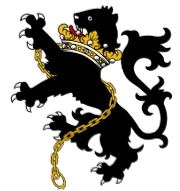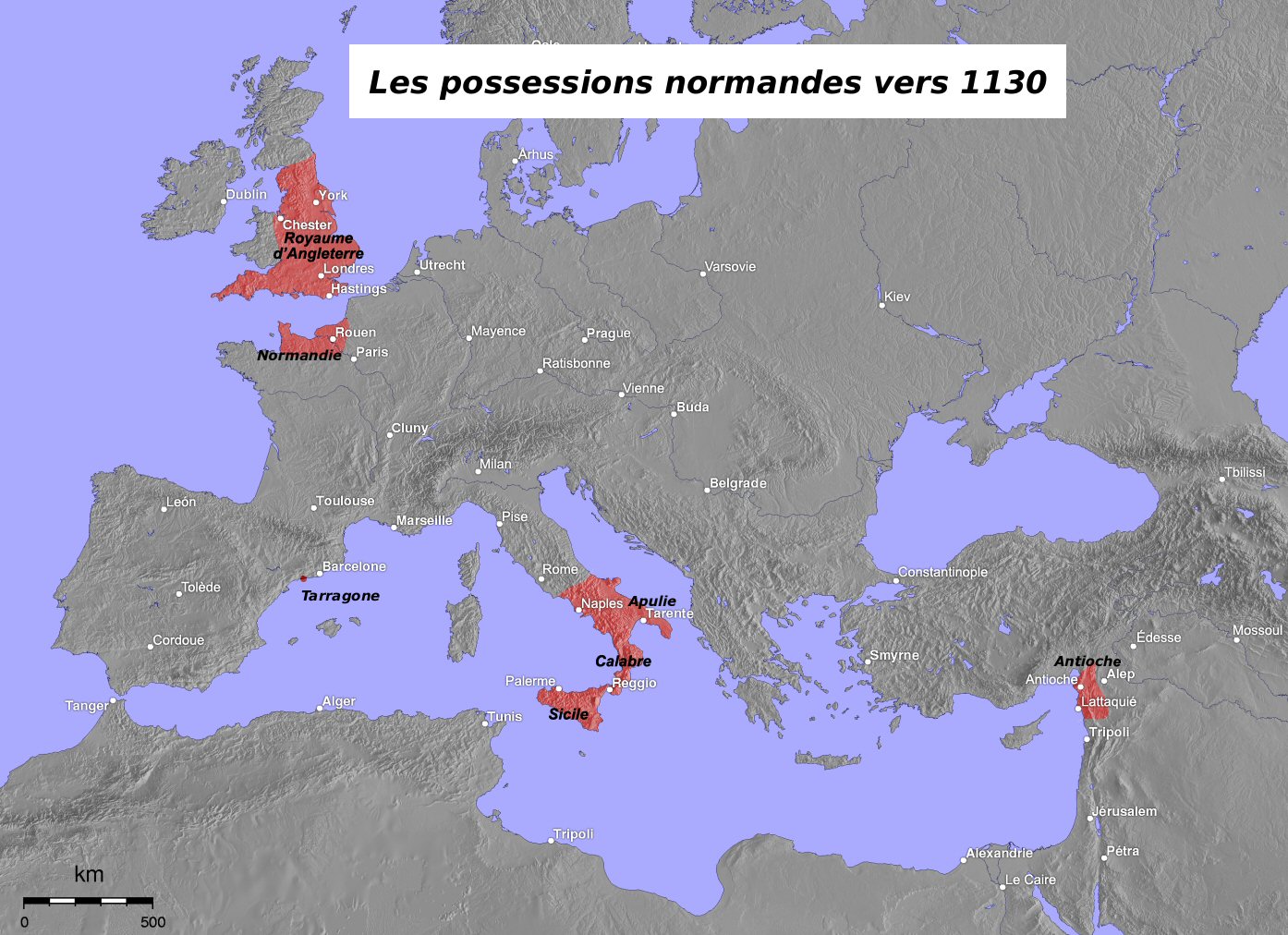- Home Page
- Books
- Articles
- The Tribes
- Presentations
- Bonus Material
Ancient History Reconsidered


The Normans:
The name Norman supposedly means “man of the north” or “Northman”1 and most academics seem intent on providing them with a Gothic or Scandinavian origin.2 The Norman style of architecture is Romanesque, i.e. Roman3 and is attested in Italy, France and northern Spain and to a lesser extent in some central European countries, but is totally absent in Scandinavia and the northern countries from where they are supposed to have come from:

Regions of Norman occupation circa 1130 ce marked in red.
“Romanesque architecture was the first distinctive style to spread across Europe since the Roman Empire. Despite the impression of 19th century Art Historians that Romanesque architecture was a continuation of the Roman, in fact, Roman building techniques in brick and stone were largely lost in most parts of Europe, and in the more northern countries had never been adopted except for official buildings, while in scandinavia they were unknown.”4
The suggestion by Edith Browne that the Normans were taught this style of building by the Lombards5 is a typical rationalization based on the prejudiced view that the Normans came from Scandinavia.
The name Normans is said to be a plural of the name Normant, whilst the Latin name was Nortmannus.6 It is actually a corruption of the name Numantini. Pliny mentions a couple of tribes in Italy, one which used to dwell in Rome called Numinienses (who had by his time disappeared)7 and the other which, in his day, were dwelling in southern Italy called Nomentani.8
A similarly named Celtic tribe called Numantini were at that time dwelling in northern Spain,9 from where they were later forced out by the invasion of the Moors, which invasion took place in the beginning of the 8th Century ce. Those who stayed in southern Italy later emerged as Normans, whilst those who ended up in northern France also emerged as Normans. (See map above to the right.)
Numantini and Nomentani are both corruptions of the name Neo-Menashe. The Hebrew letter שׁ shin often transliterates into other languages as a ‘t’ or a ‘d’. An example of this is the region of Bashan in northern Israel which Josephus called both Batanidi (Βατανίδι)10 and Batanaian (Βαταναίαν).11 The half tribe of Menashe who dwelt in the land of Gilead likewise appears in the Egyptian records as Mentiu or Menthu, “The thievish nomads of the Eastern Desert and Southern Syria.”12 The Normans were predominantly from the tribe of Menashe though other tribes seem to have attached themselves to them.
For more information, read The Forgotten Tribe of Naphtali & the Phoenicians
| 1. | Norman Architecture p.2, Edith A. Browne, London 1907. [Return] |
| 2. | See for example the article Who were the Normans? on the Norman website normans.etrusia.co.uk/whowere.php. [Return] |
| 3. | Early Christian and Byzantine Architecture p.vii, Edith A. Browne, London 1912. [Return] |
| 4. | Entry under Origins in Wikipedia article Romanesque Architecture. [Return] |
| 5. | Norman Architecture p.10, Edith A. Browne, London 1907. [Return] |
| 6. | See for example entry under Etymology in Wikipedia article Normans. [Return] |
| 7. | Pliny, Natural History iii.v (69) in H. Rackham's translation, or iii.9 in John Bostock's translation. [Return] |
| 8. | Pliny, Natural History iii.v (64) in H. Rackham's translation, or iii.9 in John Bostock's translation. [Return] |
| 9. | Pliny, Natural History iii.iii (26) in H. Rackham's translation, or iii.4 in John Bostock’s translation. [Return] |
| 10. | Josephus, Antiquities of the Jews iv.173. [Return] |
| 11. | Ibid. ix.159. [Return] |
| 12. | An Egyptian Hieroglyphic Dictionary Vol. 1, p.306, Sir Edgar A. Wallis Budge, Dover Publications, New York 1978. [Return] |
Dated 26 Nov 2013.
©AHR Researches, Birmingham, England.